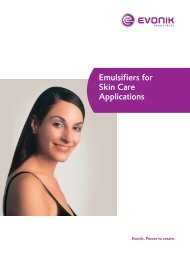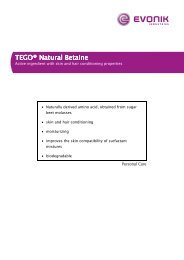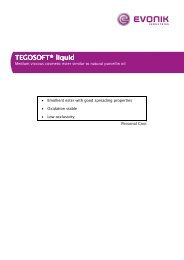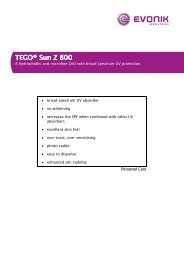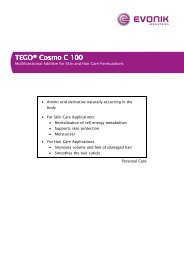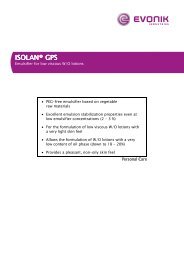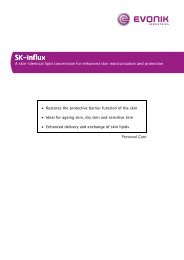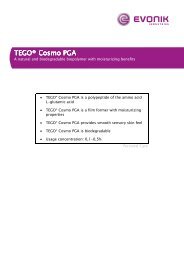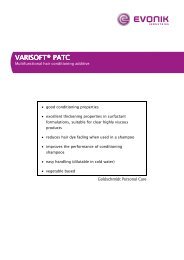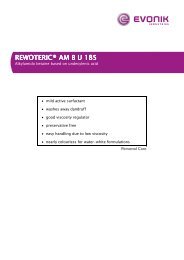Hair Types and Required Specific Ingredients for Conditioning ...
Hair Types and Required Specific Ingredients for Conditioning ...
Hair Types and Required Specific Ingredients for Conditioning ...
Create successful ePaper yourself
Turn your PDF publications into a flip-book with our unique Google optimized e-Paper software.
Curl retention [%] = (L - Lt/L - L0) * 100<br />
Curl length at t0 after drying at 50 % rel. humidity<br />
Curl length after 2 hours at 70 % rel. humidity<br />
Figure 4: Curl retention test<br />
Figure 5: Fly away effect measuring method<br />
Sensory methods<br />
Technical methods are useful in screening products <strong>and</strong> <strong>for</strong>mulations, but sensory methods should be used to confirm<br />
the findings. When per<strong>for</strong>med by trained personnel, sensory use data will closely parallel consumer preferences.<br />
<strong>Hair</strong> swatch test<br />
A sensory hair swatch test with st<strong>and</strong>ardised damaged hair is mostly used as a screening. By using a defined scoring<br />
system, we rate the following properties by sensory assessment: detangling/wet comb, wet feel, dry comb, dry feel,<br />
volume <strong>and</strong> gloss.<br />
Salon tests (half head tests) done by hairdressers<br />
One of the most important conditioning tests is the half head test. Here, the hair of a test subject is treated with two<br />
different <strong>for</strong>mulations, one on the left <strong>and</strong> one on the right of the head. The hairdresser is able to make a direct<br />
comparison of properties like ease of distribution, rinsability, wet <strong>and</strong> dry comb, wet <strong>and</strong> dry feel, drying time, gloss,<br />
volume/body, antistatic behaviour, bounce, build up, etc. Generally a defined scoring system is used.<br />
7



